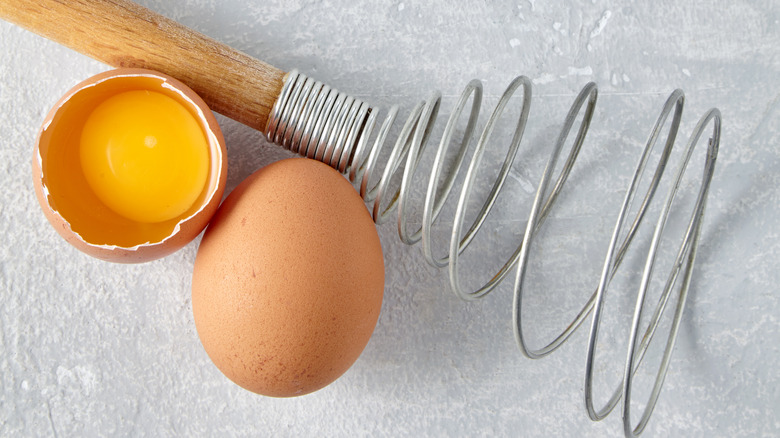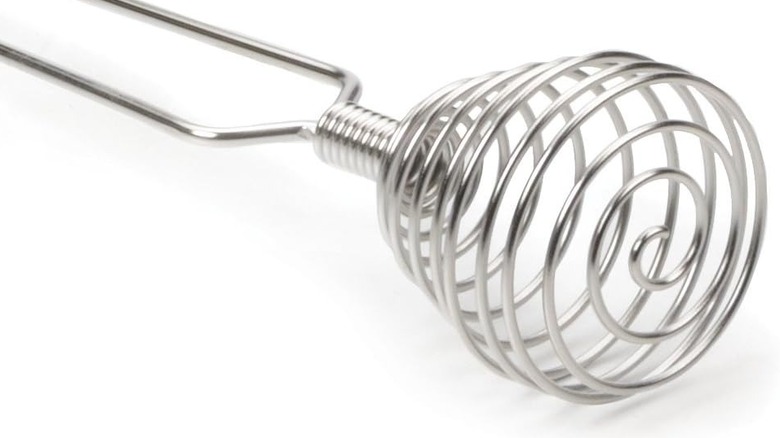What Is A Spring Whisk And When To Use It
Nothing in your drawers full of culinary tools is as whimsical as a kitchen whisk – or as useful. Those thin metal wires attached to a handle may look like a fairy's wand, but whisking by hand can take a lot of not-very-magical effort and not all whisks are created equal. While most people have a balloon whisk — the one that is bulb-shaped (like a hot-air balloon) and the wires form a cage — used to incorporate air and whisk thick batter ingredients, you may not be as familiar with the spring whisk.
A spring whisk starts with a handle and ends with a single spiraling spring. It is sometimes known as a coil whisk. The technique for using this tool is similar to the motion you make with a plunger. Bounce it up and down when you are trying to emulsify or combine ingredients that normally do not mix together very readily. Think about the oil-based and water-based ingredients you might use to create a Béarnaise sauce, a lemony hollandaise sauce, a salad dressing, or any deep liquids that need emulsifying for that matter. Using the spring whisk helps to create a uniform combination of these polar opposites.
Wire rules
You would never, unless you had no other option, use a spring whisk to whisk egg whites for your voluminous meringues nor would you pull this tool out when a sifter whisk is needed to combine dry ingredients that need to be aerated. So how do you know when to use this spiral-shaped whisk versus any other whisk? A spring whisk's place in your culinary arsenal is pretty defined. You want to break it out for emulsifying sauces, and it's also good for mixing liquids in smaller spaces, like a mug or cocktail glass, where a larger whisk wouldn't fit. And it's sometimes handy when you just need to beat up a couple of eggs. A good rule to remember is that the more wires your whisk has, the more aeration and bubbles you are going to get. The spring whisk is used when you're not looking for too much extra air.
What's the best type of material for a spring whisk? Silicone and stainless steel spring whisks are not going to perform the same. While silicone spring whisks won't scratch any nonstick cookware, they tend to be a little flimsy. A stainless steel spring whisk is going to allow you to be more forceful as you plunge it up and down, and will ultimately do a better job.

